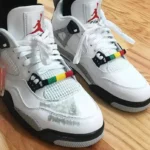After an accident that causes a fracture to the leg, one’s life will not be the same again. At least for four to six months, there are restrictions that will be placed on movement. Walking boots are designed to help make this recovery period easier and faster. Thanks to the excellent design that they have.
Can You Walk on a Broken Foot with a Boot? Yes, you can. Walking on a broken foot with boots is possible if you use the boots the right way. It’s also important that you wait till the right time before you begin to place any weight on your foot.
How to Walk in Walking Boot for Broken Ankle
If you want to walk in a walking boot with a broken ankle, you have to be careful to avoid making the injury worse. There are two ways you can walk in a walking boot.
- Walk with the Use of Crutches
- Walk Without Crutches
Walk with the Use of Crutches
Crutches are made with strong steel or wood. They have foamed upper that serve as platforms for your upper body to rest on while walking with a broken ankle.
The function of crutches is that they help to shift the weight away from your lower body. Putting weight on a broken foot will only damage the foot further and you must avoid this when recovering. Your body’s weight on your upper body will be easier to bear than if it’s on your legs.
Crutches require you to have a lot of strength in your arms to be able to lift yourself. Many people complain that this feature makes crutches unattractive to them. The fact that they are also heavy and bulky to carry around also contributes to this.
You should combine your walking boot with crutches to achieve better results. Using walking boots without crutches or any replacement for crutches will cause pain in your feet and impede your healing. If you don’t want to use crutches, there are other options you can consider.
Walking Without Crutches
If you have decided to ditch the idea of crutches, the good news is that there are alternatives. Let’s take a quick look at them.
Walker: A walker is more comfortable than crutches. You will not have to endure upper body pain or deal with their heaviness. Walkers are four-legged frames that help to support your weight. You can lean on them and take short steps without discomfort or fear of falling.
Cane or Walking Stick: A cane is a single stick that you can use to support your body weight when recovering from a broken foot. The walking stick is just like a cane, but it has hand support at its top. Both of them are less bulky and lighter in weight than the walking stick.
Wheelchair: The wheelchair is often another replacement for people who don’t want to walk in crutches. It is more expensive than all of the other alternatives but also more comfortable.
It’s simply a chair with wheels and you can move around without any help. There are even automated wheelchairs that can be driven like a car. You can’t exercise with a wheelchair though, and exercise is very crucial to your broken foot recovery.
We recommend that you get off the chair and exercise regularly if you choose this option.
Any of the methods that we have described above will help you walk on a broken foot without any problems. Remember that you must combine them with your walking boot to make the healing speedy and without any relapses.
Preventing Injuries when Walking with a Walking Boot
Walking boots are priceless to your recovery. They help to support your feet immensely and provide comfort for them. Your ankle is kept in place to avoid unnecessary shifting and worsening of the injury.

To walk in a walking boot, there are important facts that you must bear in mind. We’ll break this guide into weeks since the time you sustained the injury.
1. The First Six Weeks of Injury
When the injury is still fresh (just some hours old), don’t attempt to begin walking immediately. Allow two to three days to pass where all you do is rest your feet and avoid moving them around.
After three days have passed, you can then begin light exercises which we will describe.
Take off your walking boots in the evenings when you want to rest. You don’t have to put them on all day. If you’re feeling pains in your feet, you can take painkillers or use ice packs to cool them down.
Another thing you must do during this period is to keep your feet elevated. This will help to improve blood circulation. You can use a low stool or pillow to prop your feet up.
2. Six to Eight Weeks of Injury
Ensure that you keep your boots on especially when you want to take a walk. Also, note that it’s not yet time for long walks. Don’t force yourself to put a strain on your feet as that can cause fresh issues.
Combine your walking boot with any of the aids (crutches, walkers, or walking stick) to make things easier. Make sure that you continue your exercises.
3. Eight to Twelve Weeks of Injury
After twelve weeks, you should have been healed by now. Slowly return to your normal routine but make sure you don’t do heavy tasks. You can work out for longer, but don’t overdo it.
4. After 12 Weeks
By now, everything should be perfectly fine. You should be able to walk around without issues. If things are still gloomy, you’ll have to go see your doctor.
With this detailed guide, you can use your walking boot without problems. In case there are problems along the way, reach out to your doctor to get medical advice.
How to Exercise with a Walking Boot
Exercising during your recovery will help to improve blood circulation around your legs. It will also help to prevent stiffness in the broken foot. This is another reason why walking boots are better than casts.
Remember to give yourself at least three days from your injury before you begin trying to move your legs. That said, here’s a simple exercise plan you can follow.
A Simple Exercise Plan
This will require that you take off your boots for some minutes.
Lie down gently, making sure that you don’t put any weight on the broken foot.
When you’re well balanced, point your feet up without straining them. Use your foot to make circles in the air, one by one. Rotate this activity between both feet a couple of times before you stop the exercise.
Exercising with the Boots
To exercise with your boots on, you can try activities such as rope training while sitting on a chair, aqua jogging, upper body weight training, and swimming. These activities don’t require you to strain your feet.
Avoid doing jumping activities and if you have to stand, support yourself with crutches or come. Start your exercises gently and don’t rush.
If you feel pains during exercises, it may be an indication to stop. Never push a broken foot while it’s still healing.
Importance of Waking Boots to Your Healing Process
Walking boots will help make your healing process faster. These are the benefits you’ll gain from them:
Walking Boots will Help in Shock Absorption
Shock waves that transfer to the feet every time you strike the floor with your heels are not good for a broken foot. Walking boots will absorb the shock and protect your feet.
The Boots will Let You Use Your Feet and Prevent Stiffness
Keeping your feet unmoved for weeks while it’s healing up can cause stiffness around the area. Walking boots will help you to prevent this.
The Feet will Help You Prevent Further Injuries to Your Feet
Walking boots are highly cushioned and provide support for your feet. You’ll be able to avoid further injuries by using them.
How Much Does a Walking Boot Cost?
Depending on the brand of walking boots that you’re looking for, you can get walking boots online from as low as $29. BraceAbility has well-reviewed ones for $30.99 and above. You can check that out here and another brand here.
Where Can I Buy a Walking Boot in Stores Near Me?
You can look for a physical store in your town and make your purchase from there. You can use Google to search for ‘Walking boot stores near me’ and you’ll get to see a list of stores in your city that sell walking boots.
Buying your walking boots online is the easiest way. You’ll be able to do careful research about the boots you’re buying and have it delivered to your house.
Have a Speedy Recovery
In the trying period when you’re recovering from a broken foot, do all you can to keep yourself stable. Using a walking boot will help to make the process much more bearable and soon, you’ll be able to tell the story. Get well soon.





